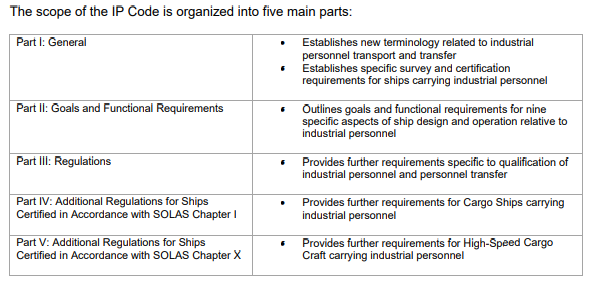
SOLAS- Safety Of Life At Sea (in short for orals)
In this blog, we will learn about the main (important) points to remember for the MEO orals Function 3. SOLAS is one of the most asked topics in MMD. So lets begin our learning journey.


Solas stands for International Convention for the Safety of life at Sea. (avoid saying Safety of Life at Sea to surveyor as some of them don't accept this abbreviation)
The latest status of number of Chapters in Solas are- 15 as follows:-
Chapter- Name
1 = General Provisions, Surveys and Certification of all the safety items, structure, machinery etc.
2-1 = Construction- Subdivision and stability, machinery and electrical installations.
2-2 = Fire Protection, fire Detection and Fire extinction.
3 = Life Saving Appliances and arrangements
4 = Radiocommunication
5 = Safety of Navigation
6 = Carriage of Cargoes
7 = Carriage of Dangerous Goods
8 = Nuclear Ships
9 = Management for the safe operation of ships
10 = Safety measures for high speed craft
11-1 = Special measures to enhance maritime safety
11-2 = Special measures to enhance maritime security
12 = Additional safety measures for bulk carriers
13 = Verification of compliance
14 = Safety measures for ship operating in polar water
15 = Safety measures for ships carrying Industrial persons [ENTER IN FORCE- 1 July 2024]
SOLAS
Chapter 1 -General Provisions
This chapter has 21 Regulations which specifies how the surveys are to be carried on board vessels addressing issuance and endorsement of certificate, their validity, duration and availability onboard to be kept. Its divided into 3 parts-
A= Application, Definition etc.
B= Survey and Certificates
C= Casualties
Important:
Reg 12- Under this regualtion, Cargo ship safety construction, Cargo ship safety equipment certificate, cargo ship safety radiotelegraphy certificate are issued.
Reg 19- Every ship holding certificate under Reg.12 of this chapter are subject to inspection by the port state control.
Chapter 2-1 -Construction- Sub division and Stability, machinery and Electrical Installations
Total 57 Regulations are there under this chapter which emphasize on how the constructions should be done so that ship don't sink even when the compartment is flooded.
There are 7 Parts as follows:
A- General
B- Subdivision and Stability
C- Machinery Installation
D- Electrical installation
E- Additional requirement for periodically unattended machinery spaces (UMS)- Reg.46 to 54
F- Alternative design and arrangement
G- Ship using low flash point fuels- Reg. 56 & 57
Chapter 2-2 -Fire Protection, Fire detection and Fire Extinction
This Chapter consist of 23 regulations dealing with all the necessary information about the Fire Fighting System onboard ship. This also has 7 parts:
A- General
B- Prevention of fire and explosion-
Reg. 4= deals with how to prevent ignition of combustible source present on ship
Reg. 5= tells about ways of cutting any one side of fire triangle.
Reg. 6= reduction of hazards to human life from release of smoke and toxic gases.
C- Suppression of fire [focus on requirement to suppress fire asap including detection and control of smoke and flame, containment requirements, structural
integrity of space to prevent fire]
D- Escape measures
E- Operational requirements [information on maintenance of fire detection , fighting and control measures/ equipment on merchant vessel.
F- Alternative design and arrangements
G- Special Requirements (Helicopter facility, carriage of dangerous goods etc)
Chapter 3- Life Saving Appliances and Arrangements
There are 41 regulation under this chapter. This chapter also has 3 main parts:
A- General
B- Requirements for ship and LSA. This Part consist of 32 Regulations. It further has 5 sections:
Sec.1- Passenger ship and Cargo ship.
Sec.2- Passenger ship (Additional req)
Sec.3- Cargo ship (Additional req)
Sec.4- LSA and Arrangement Requirement
Sec.5- Miscellaneous
C- Alternate Design and Arrangements
[NOTE: PLEASE READ AND REGULATION NUMBERS- 6 TO 19]
Chapter 4- Radio Communication
This Chapter covers very Important topics such as EPIRB, GMDSS, SART etc., about regulation relating to their installation, source of energy, performance standard and maintenance requirements. It has 3 parts:
A- General (Contains details of GMDSS service provider list)
B- Undertaking by Contracting Government
C- Ship Requirement [It consist of 13 regulations. Reg.8-11- Radio installation capabilities for initial ship shore communication and alerts in Sea areas: A1,A2,A3 and A4]
Sea Area A1: use VHF(40 nm)
Sea Area A2: use MF (40-150 nm)
Sea Area A3: by geostationary satellite (from 70 degree North to 70 degree South)
Sea Area A4: outside of Sea Area A3.
Chapter 5- Safety of Navigation
The Chapter 5 consist of 35 Regulations describing about the various navigational principles along with the design, arrangement and maintenance of Navigation equipment.
Important Regulations:
Reg.14- minimum manning requirement and crew performance onboard vessel.
Reg.16-17- maintenance of navigational equipment.
Reg.18- Survey, approval criteria and performance standards of navigational equipment.
Reg.21- Details of International Code of Signal.
Reg.22- Visibility requirements from the ship bridge
Reg.25 & 26- Regulatory requirements for electrical power source, testing and drills for steering gear system.
Reg.27- Nautical charts and publication
Chapter 6- Carriage of Cargoes and fuel
This chapter covers Loading, Unloading, Stowage and Securing of different cargoes. {NOTE: This chapter doesn't cover Oil and gas cargo}
It has 3 parts:
A- General Provision -
Reg.2 -Information to be exchanged between shipper and master on type of cargo
Reg.3- explains need for oxygen analyzer and other gas detection methods.
Reg.5- Information on Stowage and securing of cargo, requirements for MSDS for oil fuel carried onboard.
B- Special Provision for Solid Bulk cargo
C- Carriage of grains [International Grain code]
Chapter 7- Carriage of dangerous Goods
This chapter contains 16 Regulations in 3 Parts:
A- Carriage of Dangerous Goods in Packaged form.
B- Construction and equipment of ships carrying dangerous liquid chemicals in bulk.
C- Construction and equipment of ship carrying Liquified Gases in Bulk.
Chapter 8- Nuclear Ships
Under this chapter, there are 12 Regulations covering all aspects such as application, reactor selection, radiation safety, survey, certification and special control for nuclear ships.
Under this chapter, Nuclear Passenger Ship Safety certificate and Nuclear Cargo Ship Safety certificate are issued to the concerned vessels for not more than 12 months validity under Regulation 10.
Chapter 9- Management for Safe Operation of ship
The International Safety Management Code for ship owner and the operator is being described under this chapter. [FOR MORE READ ISM CODE]
Under Regulation 4, DOC and SMC certificates are mentioned.
Regulation 6 of this chapter is about the control and verification of the certificates mentioned above.
Chapter 10- Safety measures for High Speed Craft
There are 3 Regulations under this chapter telling about the requirements of High Speed crafts.
CODE: International Code of Safety for High Speed Crafts (HSC Code), adopted in 1994
Chapter 11-1- Special measures to enhance Maritime Safety
There are 7 regulations under this chapter as follows:
Reg.1- provide information about authorization of recognized organization.
Reg.2- requirements for enhanced survey for bulk carrier and oil tankers along with harmonization of survey periods of ships not subjected to ESP.
Reg.3- provide information about the ship identification number and company cum owner identification number.
Reg.4- explains role of port state control on operational requirements.
Reg.5- deals with CSR (continuous synopsis record)
Reg.6- about investigation of marine causalities.
Reg.7- tells about atmosphere testing instruments for enclosed spaces.
Chapter 11-2- Special measures to enhance maritime security
There are 13 regulations under this chapter. dealing with maritime security measures which all parties involved in maritime trade need to follow i.e ship, port, ship owner, contracting government etc. - ISPS CODE IS MUST READ TOPIC FOR ORALS
Important Regulations are as follows:
Reg.3- obligation of contracting governments towards maritime security.
Reg.4- requirements for companies and ship on how to comply with ISPS.
Reg.6- SSAS (Ship Security Alert System) requirements.
Reg.7- talks about how to deal with the threats to the vessel
Reg.10- relevant requirements for port facilities under ISPS.
Reg.13- list out different information that needs to be communicated to the ship manager and ship.
Chapter 12- Additional safety measures for Bulk carrier
This chapter is Very Important for engineers who sailed on Bulk carriers. This consist of 14 regulations guiding about the additional safety measures that should be taken for ensuring safe operation of Bulk carriers. [ REMEMBER BY HEART ALL THESE - BULKY GUYS ]
(Applicable on Bulky of length more than 150 meters)
Reg.4- damage stability requirements for bulk carriers
Reg.5&6- details about structural strength requirements for bulk carrier
Reg7- deals with survey and maintenance requirements of bulk carriers.
Reg.10- requirements for declaring solid bulk cargo density.
Reg.11- details about the loading instrument used for cargo loading on bulk.
Reg.12- Requirement for having water ingress alarm in Hold, Ballast space and other dry spaces.
Reg.13- necessity of pumping system to drain ballast tank.
Reg.14- Restriction toward bulk carrier for sailing with empty cargo holds
Chapter13- Verification of Compliance
Adopted on 22 May 2014 (try to remember).
This chapter requires all parties to go through periodic audits by the organization following the audit standards.
This chapter includes- III Code (IMO INSTRUMENT IMPLEMENTATION CODE)
The secretary general of IMO is overall responsible for the audits.
Chapter 14- Safety measures for ships operating in Polar Region
It deals with ships that intend to operate within the arctic and Antarctic areas and need to carry POLAR SHIP CERTIFICATE. [ Do read Polar Code]
This code enter into force on 1 January 2017.
There are total 4 regulations.
Chapter 15- Safety measures for ships carrying Industrial Personnels
This chapter is the latest added chapter to SOLAS in 1 July, 2024.
This new chapter of the SOLAS Convention establishes a standard for the construction, equipment and operation of ships carrying industrial personnel, in order to protect the lives and health of the personnel on board, as well as the environment.
INTERNATIONAL CODE OF SAFETY FOR SHIPS CARRYING INDUSTRIAL PERSONNEL (IP CODE)
There are 5 parts of this code. [ check image ]


Knowledge
Your resource for marine engineering education and standards.
© 2024. All rights reserved.
